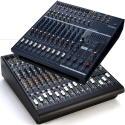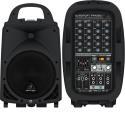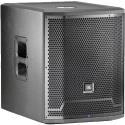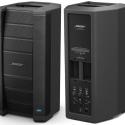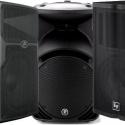Mixing Board Explained - What it Does & How It Works
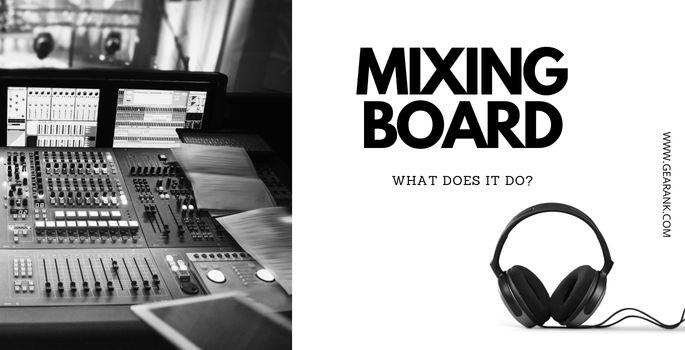
You don't have to be a sound engineer to be curious about the mixing board. Music directors, musicians, techs, announcers, and audiences are all affected by this vital device. Even casual listeners enjoy songs that have been fine-tuned on a mixing desk.
It is at the heart of live productions and recording studios, melding different musical elements into a song. And it is the bridge that connects the musicians to their audiences.
The mixing console may seem complicated with all the buttons and faders, but it's straightforward once you grasp its key features.
This article will help you understand mixing desks so you know how to make the most of it, regardless of your role in music production.
What Does A Mixing Board Do?
As the name implies, this device mixes different audio sources.
Live sound mixers are the core of PA systems, controlling the audio flow from the source to the speakers. Recording mixing consoles do the same thing but for recording purposes.
And it's not just random or mindless mixing; signal flow is routed to dedicated channels that can be tweaked to meet the song's requirements. And "tweak" is saying it mildly because modern mixers can do much more.
Primary controls include the input gain knobs (pre fader) and volume level faders. In between the two, the channels usually provide tone-shaping controls via EQ, some more complex than others.
Most modern mixers come with post fader processing and onboard digital effects, which include favorites like compression, noise gate, reverb, and delay.
If you're a musician and vocalist, you need to know about parameters related to monitor mixes, like auxllary sends, monitor EQ, volume, and balance.
Most mixers also come with phantom power for use with condenser microphones.
Non-musicians and listeners will be primarily interested in overall EQ and volume levels. And they are the first to be annoyed by feedback, noise, and other sound system problems.
And all these issues fall on the shoulders of the audio engineer manning the mixer. Sound techs will have to tweak parameters to meet the needs of everyone carefully.
You can route the output of older mixers to a USB audio interface to get them recorded. But some modern mixers come with built-in USB direct recording output.
Quick Look Back into Mixing Desk History
Mixing boards have a long history dating back to the 1920s, in the early days of radio broadcasting. As technology improved, mixers could accommodate complex signal flow and provide more control.
The mixing desk evolved a lot from being a tube-driven analog device with limited channels, basic faders, and knobs. They now accommodate solid-state technology, stereo output, and multi-track recording. And recently, mixers have made the jump into the digital age. Modern mixers now have digital processors. These allow for advanced audio processing, automation, and recall capabilities.
For recording, many have turned to virtual mixers or Digital audio workstations (DAWs). These offer virtually unlimited channels and expansive parameter control, effects, and other audio processing.
Different Types of Audio Mixers
Here are the most common types of mixers that you'll encounter in the wild.
Analog Mixer
Analog mixers are straightforward devices with hands-on controls. Instead of an LCD screen, it relies on analog knobs, faders, buttons, and small lights. Since there are no menus, this is more intuitive than digital controls.
There are no controls hidden in menus; what you see is what you get. Controls are also aligned to the input channel, so you know which audio signals you are tweaking. This also makes it easier to set up since you can see which input signal is going to each input channel.
Once familiar with an analog mixer, you can quickly figure out what is happening by scanning the surface. You can grab it when you need to adjust a setting. Being old technology, this mixer has limited functions. Don't expect it to do something like advanced audio processing and remote control tweaking. They often have insert points to route in external effects and outboard gear should you need to.
Digital Mixer
A digital mixer has an advanced computer with several AD/DA processors and a particular control surface. While analog mixers are more intuitive, they need more of the conveniences of digital mixers.
Digital boards, for instance, have many sophisticated EQs onboard processing, effects, and dynamics processing. This reduces the need for outboard equipment. Another significant benefit is the capacity to save and rapidly recall whole configurations.
Digital mixers do have a steeper learning curve. They frequently feature one master control section where you may set up all your channels. Large screens and preset recall make up for this, though.
Given their pristine audio quality, it is not surprising that digital mixers are now considered standard live sound equipment.
Audio Mixer Features
I thought it would be helpful to explain the different controls that are found on the mixing desk. Not all of these features will be found on every mixing desk, but it's always good to be aware of them all.
Input Channels And Strips
A soundboard's input strip has connectors that take in external signals and send them to the various mixer sections. Most of the input jacks in the input section are XLR, 1/4", or Combo. These are dedicated ports for mic and instrument cables. You'll also see unbalanced lines or balanced inputs. Some mixers will allow for more connectivity options, including Bluetooth streaming.
Mic Preamp
Most channel strips come with a mic preamplifier built-in. The mic preamp amplifies the signal from a microphone or an instrument, which is controlled via the input gain.
Transparency is expected from mic preamps, but some are sought after for their subtle coloration, resulting in a more pleasing sound.
Gain Levels
The signal level that is allowed to enter the audio mixer on a given channel is controlled by the gain knob. In other words, it determines how much the channel's Preamp will amplify the incoming audio signal.
Some models may refer to it as "Trim" or "Sensitivity." Raising the gain could enhance a signal if it were too faint.
The gain control is the most significant knob on the channel strip. If it's set incorrectly, the sound will be compromised immediately, and there is no way to fix it. You'll lose some definition if you set it low while setting it too high will cause Audio Clipping.
Musicians should be aware of this setting to avoid pushing their amps or pedals to the clipping point, negatively impacting their overall sound.
You need to ensure the fader is down when setting the gain.
Faders
Faders are the first thing to come to mind when you think of a mixing console. Usually each input has a channel fader that controls channel volume. This slider is used to increase or decrease the output level of a specific channel. Some faders are assigned to subgroups (group of channels).
More expensive mixers come with mechanical faders, automatically setting the faders to match your digital settings. The most important feature of faders is its tactile design. It's easy to grab and adjust, and one glance can give me a good idea of where the setting are. Special care should be given when adjusting the main volume; they usually let you control the left and right output channels.
EQ
Even the most basic mixers come with EQ because it is important to get the mix right. Equalization can range from simple one-knob tone control to basic 3-band EQ to complex multi-band equalizers.
Digital soundboards let you apply EQ independently per channel. This is essential when dealing with different instruments and singers. Some can even apply EQ on a per-sub-group basis, which is convenient when you want to EQ the rhythm section without affecting the vocals. The main output will usually have its dedicated output.
Musicians and singers should coordinate with the sound techs during sound check to find good-sounding EQ settings.
I still remember when the main EQs were tweaked on an external device. Nowadays, almost all essentials are bundled digitally.
High Pass And Low Cut Filter
Most mixing desks have low-cut filters or high-pass filters. These can reduce bass as needed.
Don't be confused by the name. The term "High Pass" means it lets the higher frequencies "pass" through. High Pass and Low Cut can be used interchangeably.
They are controlled by a small switch below or above the gain knob. But some come with knobs for more detailed control.
Mute
There is a mute switch on each channel, which, when turned on, will mute and disable audio. Muting lets you lower the volume of each channel to zero without affecting your current levels. This is especially handy when all the faders are set after soundcheck. It is the first thing to check when you're not getting any sound from your mixer.
Peak LED
A peak LED lets you visually monitor if your input or output signals are too high on all channels. This allows the audio engineer to lower the gain or volume quickly to prevent audio clipping and unwanted distortion. The LED will stop blinking when the volume is at the appropriate level.
Some mixers have graphic LEDs that move in conjunction with your input and output levels. They give you better visualization, but they do take up space.
Frequently Asked Questions
Is It Necessary To Have A Mixing Desk?
If you're always playing alone, you won't need one. A two-channel audio interface would be enough for basic mixing and mastering tasks.
Since most venues have mixers, you usually don't need one for gigging. But you'll need a mixing desk if you use more complex live productions and you want better control over your sound.
If you're planning to start a band, having a small mixer is useful for practice and even for gigging.
Why Are Mixing Desks So Expensive?
Given the complexity of mixers, it's unsurprising for them to command a premium price tag. Thankfully, mixers are known to last for many years, which offsets the high initial premium for each one. All audio project studios must have a mixer of some form, so there's high demand for them.
Does A Mixing Console Need An Amplifier?
Modern PA systems have digital mixers that connect to powered PA speakers. And since these active speakers already have built-in amplifiers, there's no real need for an external amplifier.
If your PA system uses passive speakers, you'll need an amplifier.
Conclusion
It can take some time to get used to all the features, especially if you are starting your audio production journey. Getting formal training on mixers can help, or you can join a mixing board community. Some groups have helpful community builders that can clarify questions you may have. The more efficient you are at navigating and controlling a mixing board, the better results you can get. Hopefully, you'll also appreciate your sound tech better, as you uncover more of the mixer's intricacies.



